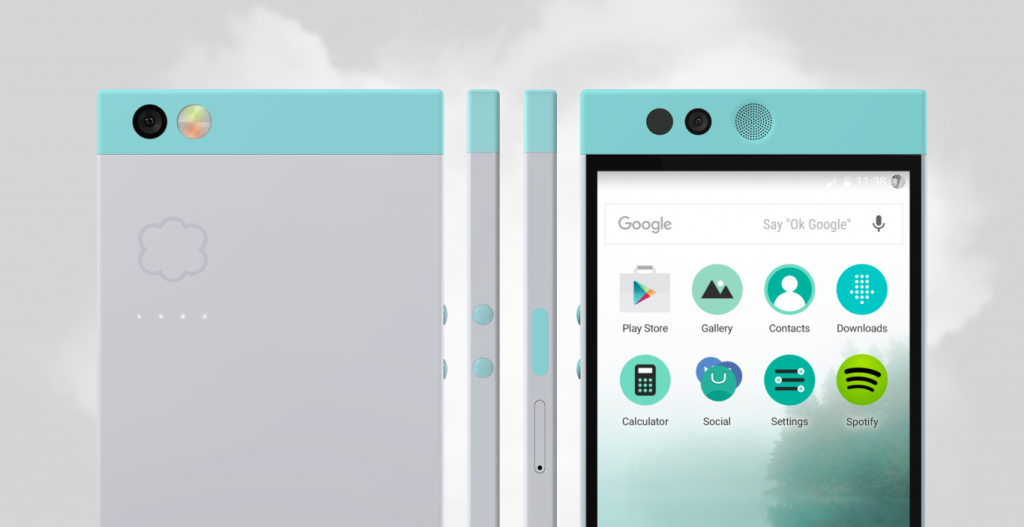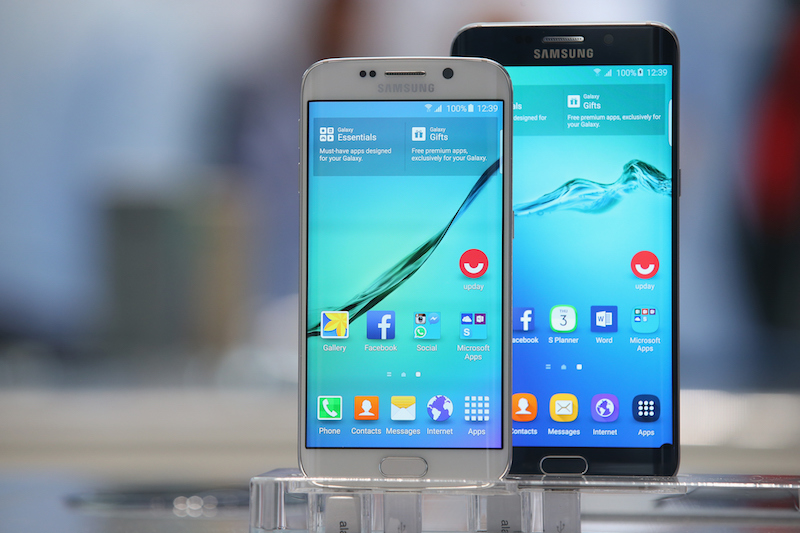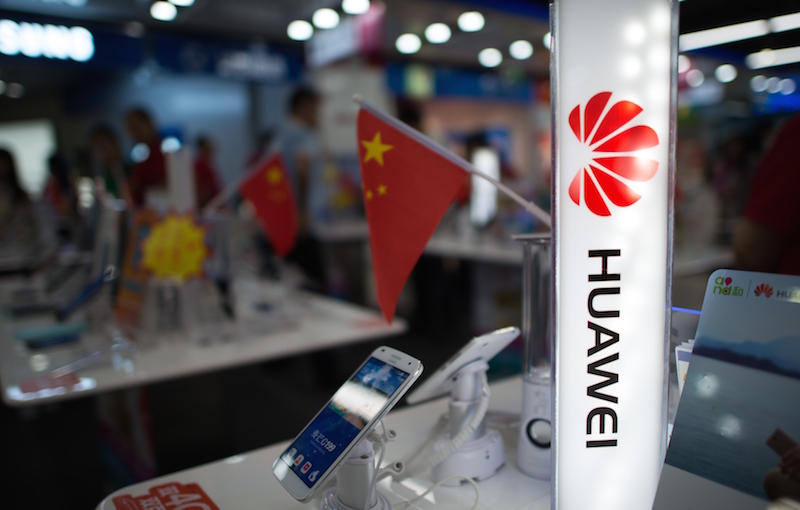Maybe you’re looking forward to upgrading to a brand-new smartphone in 2016, or maybe you’ve resolved to grit your teeth and make your old smartphone last another year. Either way, we think that it’ll be difficult for any tech enthusiast to get through 2016 without being tempted by one of the brand-new smartphones that are currently on their way. Read on to learn all about the most interesting smartphones that are expected to launch this year.
1. Nextbit Robin

Source: Nextbit.com
The Nextbit Robin is a cloud-first smartphone created by Google and HTC veterans. The phone is optimized to take advantage of the cloud by backing up your apps and photos, archiving the things you use least when you need more space, and securely transmitting and storing all of your data. Nextbit ran an extremely successful crowdfunding campaign to finance the production of the phone, and the company’s Kickstarter page explains that it will begin shipping GSM models to early adopters in February. Also in February, the company will open its online store so that you can get your hands on the Robin even if you didn’t back the Kickstarter campaign.
2. Samsung Galaxy S7

Sean Gallup/Getty Images
Samsung’s latest flagship phone is expected to come in two variations: a Galaxy S7 with straight sides and a Galaxy S7 Edge with curved sides. It’s also been reported that Samsung could unveil a larger Galaxy S7 Edge+ alongside the other two models, instead of waiting to unveil it until later in the year. The S7 is expected to feature a pressure-sensitive touchscreen, a USB Type-C port, and possibly an iris scanner. Recent rumors have indicated that Samsung could unveil the Galaxy S7 and Galaxy S7 Edge as soon as February 20, which would be consistent with the company’s usual choice to unveil a new flagship phone at Mobile World Congress, which will take place this year February 22 to 25.
3. Huawei P9

Johannes Eisele/AFP/Getty Images
Huawei is increasingly becoming a name to know if you’re interested in the top Android smartphone manufacturers around the world, and the Huawei P9 will seek to take on flagship phones like the Galaxy S7 and the iPhone 7. VentureBeat reports that Huawei will launch four different versions of the P9, including a standard P9, a budget-friendly P9lite, a P9max, and a feature-enhanced P9. The fourth variant is expected to feature a dual-lens camera and a dual sensor configuration, which would enable features like post-capture refocus and simulated aperture adjustment. Huawei isn’t expected to launch any of these phones at MWC, but at a dedicated event a few weeks afterward.
4. LG G5

Timothy A. Clary/AFP/Getty Images
LG is going to follow up last year’s excellent LG G4 with the LG G5 this year. BGR reports that the smartphone will likely bring a complete redesign of the company’s past flagship phones, with a design that’s thinner, wider, and taller than the design of the current G-series phone. It’s also been reported that the phone could feature an easily removable battery, use an all-metal build, integrate a fingerprint scanner, and perhaps use an edge-to-edge display. LG is widely expected to unveil the new phone at Mobile World Congress, or if it doesn’t introduce the phone at its press conference at the event, to launch it shortly afterward, in March or April.
5. HTC One M10

Sam Yeh/AFP/Getty Images
We don’t have too much information about the HTC One M10 yet, but the stakes are high for HTC to redeem itself and its line of flagship phones after the release of the flawed One M9, which was criticized for its close resemblance to the iPhone. Android Pit reports that the phone will be a high-end flagship model, with 4GB of RAM, a microSD slot, and a 3,500mAh battery. It’s also likely to feature a higher-resolution screen than last year’s model, is expected run Android Marshmallow out of the box, and will probably feature an upgraded camera system. The smartphone is expected to appear in late spring, likely in March or April.
6. Project Ara

Bryan Bedder/Getty Images
Project Ara is a modular smartphone that made our list of the top Google projects to watch in 2016. The phone consists of an endoskeleton that holds interchangeable modules, like the CPU, battery, camera, and display, and you’ll be able to change and upgrade those elements to customize, upgrade, or repair your phone. While we don’t know when Project Ara will launch, it’s possible that Google will share some details at I/O 2016, which is scheduled for May 18 to 20. It’s also possible that Project Ara could make an appearance at Mobile World Congress in February, though it seems unlikely to do so as a finished project.
7. Sony Xperia Z6

Sean Gallup/Getty Images
Sony’s next-generation Xperia Z6 is the subject of lots of speculation and almost as much confusion. As Digital Trends reports, there could be an entire family of Xperia Z6 devices, or a reduced selection of devices. Sony could introduce a 5.2-inch Xperia Z6, a 5.8-inch Z6 Plus, a 6.4-inch Z6 Ultra, and possibly a 4.6-inch Z6 Compact, a 4-inch Z6 Mini, and even a 5-inch Xperia Z6. Sony might not unveil all of those devices, or it could introduce some or all but set apart just a couple as flagship phones. It’s possible that Sony will announce the Xperia Z6 at Mobile World Congress, but a launch later in the year, perhaps in May or June, seems more likely.
8. Asus Zenfone 3

Manjunath Kiran/AFP/Getty Images
Asus’s Zenfone 3 is expected to follow up the Asus Zenfone 2, which was one of 2015’s favorite affordable but powerful mid-range smartphone. The only complaint that most reviewers had with the Asus Zenfone 2 was that the display could have been better, so the Zenfone 3 is expected to integrate a higher-resolution display. Asus could introduce QHD screens for some Zenfone 3 models that launch this year, and this year’s phone is also expected to run Android 6.0 Marshmallow out of the box, use Qualcomm chips instead of Intel processors, and integrate fingerprint scanners. The phone is expected to be unveiled in the second quarter of the year, likely in May or June.
9. Lenovo’s Project Tango phone

Sean Gallup/Getty Images
Project Tango isn’t the only Google project that’s expected to arrive in 2016. Project Tango is collaborating with Lenovo to create the first Tango-enabled device for consumers using extra sensors that enable its camera to perceive depth. The platform will enable developers to create apps that “explore physical space around the user, including precise navigation without GPS, windows into virtual 3D worlds, measurements of spaces, and games that know where they are in the room and what’s around them.” The phone is expected to cost less than $500 and is slated to arrive in the summer of 2016.
10. Microsoft’s Surface Phone

Andrew Burton/Getty Images
While we don’t have much in the way of concrete evidence, it’s been speculated that Microsoft is going to introduce a Surface Phone this year. As Business Insider reports, the phone would be designed by the Surface team and would likely run Office and other software that businesses use everyday. The phone is expected to feature an AMOLED display, an Intel Atom x3 processor, 4GB of RAM, and 64GB to 128GB of internal storage. The device could be announced at MWC, but is more likely to appear later in the year, perhaps at the Build developer conference in April or in August with the Redstone Windows 10 update.
11. iPhone 7 and iPhone 7 Plus

Source: Apple.com
Though Apple isn’t expected to announce the iPhone 7 and iPhone 7 Plus until its usual September timeframe, there are already many rumors about the next iPhone. Some rumors have indicated that the iPhone 7 could feature a twin camera system, or at least dual lenses, and others have suggested that the iPhone 7 could integrate wireless charging or introduce a touchscreen with a built-in TouchID sensor. But what has most iPhone users talking is the rumor that the iPhone 7 could ditch the traditional headphone jack in favor of the all-in-one Lightning connector. The phones will likely be introduced at a press event mid-September, as is usual for Apple’s annual iPhone launch.
12. HTC Nexus phones

Justin Sullivan/Getty Images
Last year, Google worked with LG and Huawei on the Nexus 5X and Nexus 6P. While there might be two more Nexus devices in 2016, there may be just one manufacturer behind them both. Digital Trends reports that HTC may make two Nexus smartphones for Google this year, perhaps ones featuring 5-inch and 5.5-inch displays instead of the 5.2-inch and 5.7-inch displays of 2015’s Nexus devices. HTC last worked with Google on the Nexus 9 tablet in 2014. There’s a long time before the new Nexus devices launch, since they’re not expected until October, when the next version of Android appears, and rumors about the new Nexus phones will be interesting to watch.
More from Gear & Style Cheat Sheet:
- 7 Ways to Keep Your Smartphone Running Like New
- Worst of CES: The Most Disappointing Trends for 2016
- 9 Google Projects to Look Out for in 2016


















